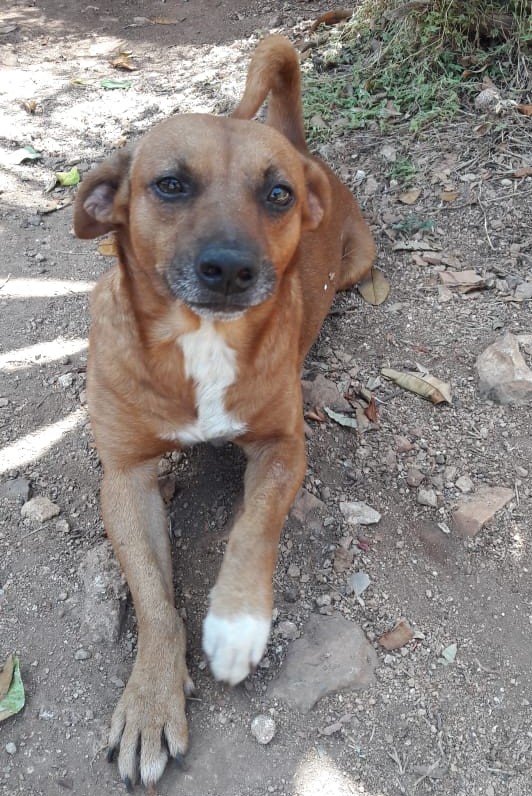Evidence of Leptospira spp. in blood of dogs in a rural community in Yucatan, Mexico
Evidencia de Leptospira spp. en sangre de perros de una comunidad rural de Yucatán, México.

Show authors biography
Objective. To describe the frequency of infection with Leptospira spp. in dogs of a rural community in the state of Yucatán, Mexico. Materials and methods. Blood samples were collected in 120 dogs from Maxcanú, Yucatán. Besides, characteristics such as sex, age, and breed were registered, and owners were asked about the vaccine history. The samples were transported to the laboratory and through the polymerase chain reaction diagnostic test, were reported the amplification of two fragments of the 16S ribosomal gene belonging to Leptospira spp. Results. The infection frequency found was 1.7% (2/120; 95%CI= 0.2 - 5.9%). Both positive dogs were males, puppies, mongrels (mix of breeds), and no vaccination history. Conclusions. A low frequency of infection is described in the dogs of the study site. More epidemiological research is needed to know the Leptospira species involved in the infection and identify the risk of transmission to the inhabitants or other domestic animals of the study site.
Article visits 1141 | PDF visits
Downloads
- Sánchez-Montes S, Espinosa-Martínez DV, Ríos-Muñoz CA, Berzunza-Cruz M, Becker I. Leptospirosis in Mexico: epidemiology and potential distribution of human cases. PLoS One. 2015; 10(7):e0133720. https://doi.org/10.1371/journal.pone.0133720
- Costa F, Hagan JE, Calcagno J, Kane M, Torgerson P, Martinez-Silveira MS, et al. Global morbidity and mortality of leptospirosis: a systematic review. PLoS Negl Trop Dis. 2015; 9(9):e0003898. https://doi.org/10.1371/journal.pntd.0003898
- Navarrete-Espinosa J, Moreno-Muñoz M, Rivas-Sánchez B, Velasco-Castrejón O. Leptospirosis prevalence in a population of Yucatan, Mexico. J Pathog. 2011; 2011:408604. https://doi.org/10.4061/2011/408604
- Luna AMA, Moles CLP, Gavaldón RD, Nava VC, Salazar GF. La leptospirosis canina y su problemática en México. Rev Salud Anim. 2008; 30(1):1-11. https://scielo.sld.cu/pdf/rsa/v30n1/rsa01108.pdf
- Goldstein RE. Canine leptospirosis. Vet Clin North Am Small Anim Pract. 2010; 40(6):1091–1101. https://doi.org/10.1016/j.cvsm.2010.07.008
- White AM, Zambrana-Torrelio C, Allen T, Rostal MK, Wright AK, Ball EC, et al. Hotspots of canine leptospirosis in the United States of America. Vet J. 2017; 222(1):29–35. https://doi.org/10.1016/j.tvjl.2017.02.009
- Panti-May JA, Zonta ML, Cociancic P, Barrientos-Medina RC, Machain-Williams C, Robles MR, et al. Occurrence of intestinal parasites in Mayan children from Yucatán, Mexico. Acta Trop. 2019; 195(1):58-61. https://doi.org/10.1016/j.actatropica.2019.04.023
- Torres-Castro M, Febles-Solís V, Hernández-Betancourt S, Noh-Pech H, Estrella E, Peláez-Sánchez R, et al. Leptospira patógena en murciélagos de Campeche y Yucatán, México. Rev MVZ Córdoba 2020; 25(2):e1815. https://doi.org/10.21897/rmvz.1815
- Cárdenas-Marrufo MF, Vado-Solís I, Pérez-Osorio CE, Segura Correa JC. Seropositivity to Leptospirosis in domestic reservoirs and detection of Leptospira spp. from water sources, in farms of Yucatan, Mexico. Trop Subtrop Agroecosystems. 2011; 14(1):185-189. http://www.revista.ccba.uady.mx/ojs/index.php/TSA/article/view/698/507
- Ortega-Pacheco A, Guzmán-Marín E, Acosta-Viana KY, Vado-Solís I, Jiménez-Delgadillo B, Cárdenas-Marrufo M, et al. Serological survey of Leptospira interrogans, Toxoplasma gondii and Trypanosoma cruzi in free roaming domestic dogs and cats from a marginated rural area of Yucatan Mexico. Vet Med Sci. 2017; 3(1):40–47. https://doi.org/10.1002/vms3.55
- Ortega-González CN, Martínez-Herrera DI, Ortiz-Ceballos GC, Pardío-Sedas VT, Villagómez-Cortés JA, Flores-Primo A, et al. Asociación entre leptospirosis en perros domiciliados y en sus propietarios en Veracruz-Boca del Río, México. Agrociencia. 2018; 52(Extraordinario 1):67-79. https://www.colpos.mx/agrocien/Bimestral/2018/dic-especial/art-8.pdf
- Torres-Castro MA, Gutiérrez-Ruiz E, Hernández-Betancourt, S, Peláez-Sánchez R, Agudelo-Flórez P, Guillermo-Cordero L, et al. First molecular evidence of Leptospira spp. in synanthropic rodents captured in Yucatan, Mexico. Revue Méd Vét. 2014; 165(7-8):213-218. https://www.revmedvet.com/2014/RMV165_213_218.pdf
- Torres-Castro M, Cruz-Camargo B, Medina-Pinto R, Reyes-Hernández B, Moguel-Lehmer C, Medina R, et al. Detección molecular de leptospiras patógenas en roedores sinantrópicos y silvestres capturados en Yucatán, México. Biomedica. 2018; 38(Suplemento 2):51-58. https://doi.org/10.7705/biomedica.v38i3.3938
- Romero-Vivas CM, Cuello-Pérez M, Agudelo-Flórez P, Thiry D, Levett PN, Falconar AK. Cross-sectional study of Leptospira seroprevalence in humans, rats, mice, and dogs in a main tropical sea-port city. Am J Trop Med Hyg. 2013; 88(1):178–183. https://doi.org/10.4269/ajtmh.2012.12-0232
- Cortez-Aguirre GR, Jiménez-Coello M, Gutiérrez-Blanco E, Ortega-Pacheco A. Stray dog population in a city of Southern Mexico and its impact on the contamination of public areas. Vet Med International. 2018; 2018:2381583. https://doi.org/10.1155/2018/2381583
- Hernández-Ramírez CV, Gaxiola-Camacho SM, Osuna-Ramírez I, Enríquez-Verdugo I, Castro-del Campo N, López-Moreno HS. Prevalence and risk factors associated with serovars of Leptospira in dogs from Culiacan, Sinaloa. Vet Mex OA. 2017; 4(2):32-43. http://dx.doi.org/10.21753/vmoa.4.2.369
- Blum-Domínguez Sdel C, Chi-Dzib MY, Maldonado-Velázquez MG, Nuñez-Oresa LA, Gómez-Solano M, Caballero-Poot RI, et al. Detection of reactive canines to Leptospira in Campeche City, Mexico. Rev Argent Microbiol. 2013; 45(1):34–38. http://pubmed.aam.org.ar/PMID/23560786.pdf
- Ward P, Glickman T, Guptill E. Prevalence of and risk factors for leptospirosis among dogs in the United States and Canada: 677 cases (1970-1998). J Am Vet Med Assoc. 2002; 220(1):53-58. https://doi.org/10.2460/javma.2002.220.53























